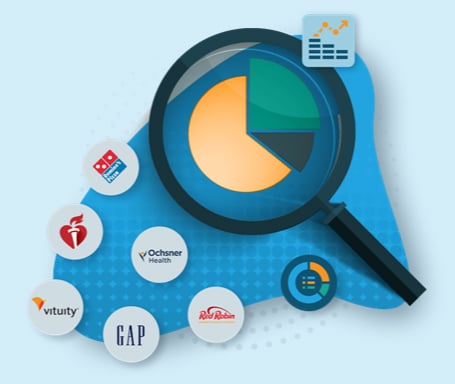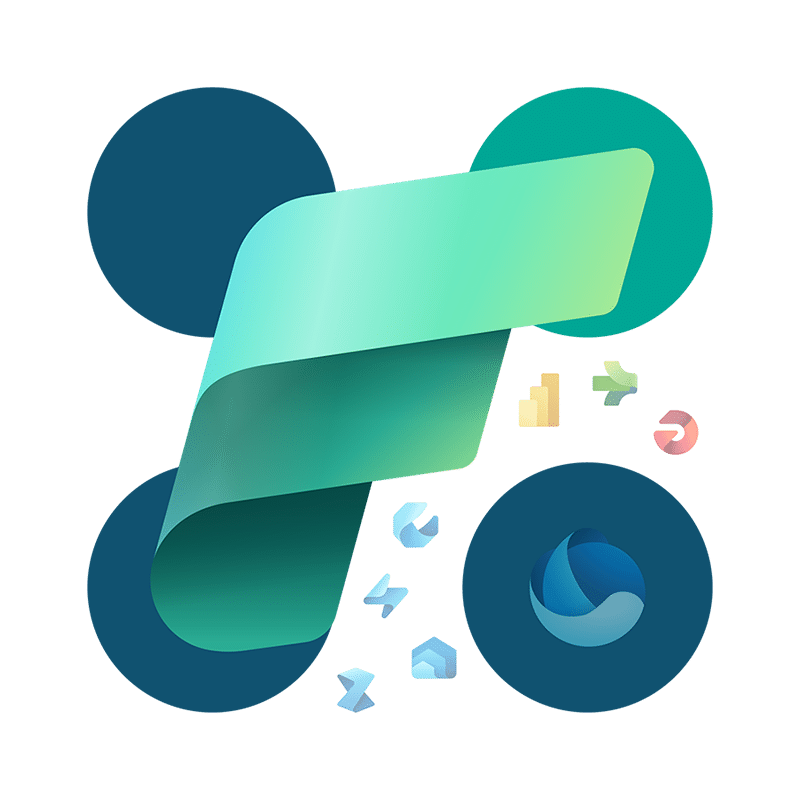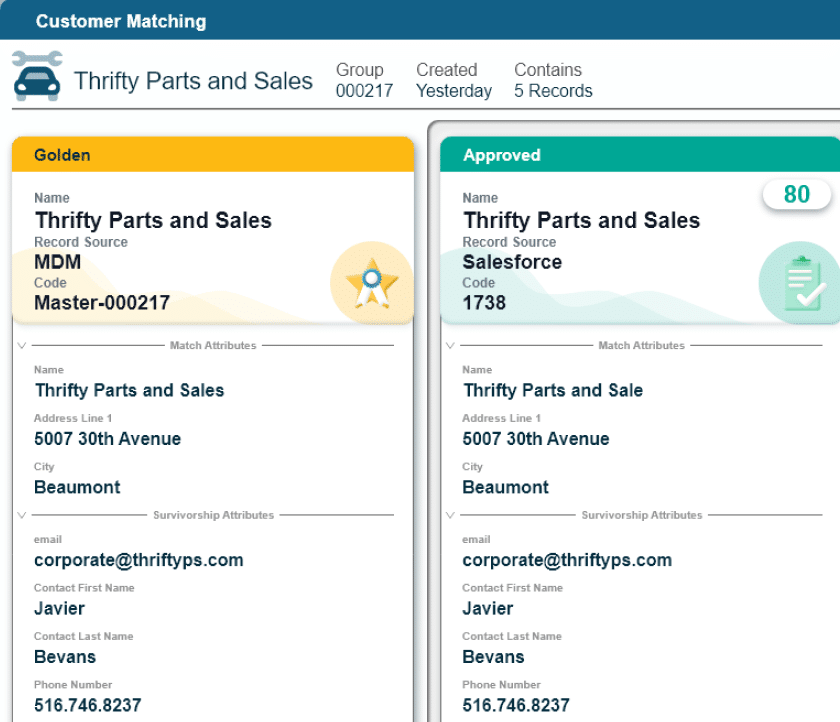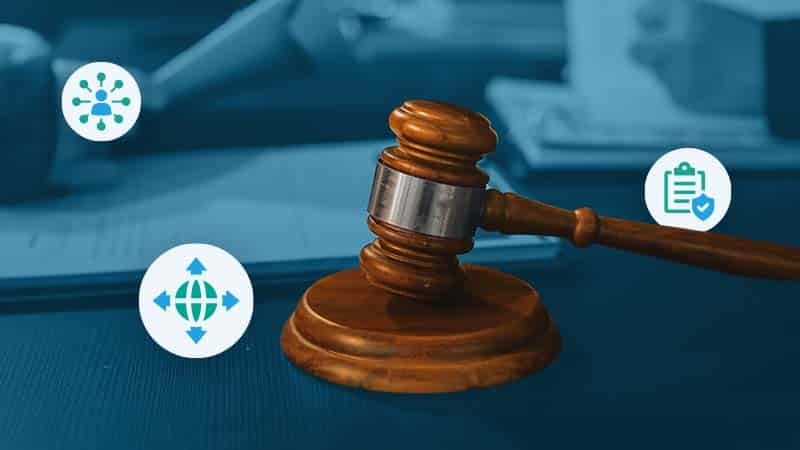Table of Contents
Key Takeaways
Data governance establishes policies, roles and processes to ensure consistent, trustworthy data across the enterprise.
Real-world data governance examples from insurance and healthcare highlight how governance enables faster onboarding, system consolidation and better analytics.
A strong data governance use case is that it ties directly to cost savings, risk reduction and strategic goals like digital transformation and regulatory compliance.
From cleaner analytics to faster decision-making, the right data governance practices ensure your data is accurate, trusted and ready for action. The challenge is knowing where to start and how to tie governance efforts to business value.
In this post, we’ll explore real-world data governance examples, proven frameworks and practical use cases to help you tie governance to cost savings and compliance wins.

Accelerate Microsoft Fabric Success
What Is Data Governance?
Data governance is the set of policies, processes, roles and responsibilities that ensure data across an organization is accurate, consistent, secure and used responsibly. It provides the foundation for trustworthy data by establishing standards for how data is defined, documented, accessed and maintained.
At its core, data governance helps organizations answer critical questions like:
- Who owns this data?
- Where did it come from?
- Is it accurate and up to date?
- Who is allowed to use it — and for what purpose?
Effective data governance doesn’t just prevent risk — it unlocks value. It enables better decision making, increases operational efficiency, improves regulatory compliance and enhances data quality across the business. Whether you’re managing customer records, financial data or product hierarchies, governance gives you the confidence to rely on your data and act on it.
Read more: Data Governance — Definition, Tools, Framework
Data Governance Examples
Data governance applies across industries and departments, with different goals depending on the type of data being managed. Some common data governance examples include:
- Customer data: Standardizing names, addresses and contact details across systems to create a “single view of the customer” for marketing, sales and customer service teams.
- Supplier data: Defining consistent criteria for vendor onboarding, performance standards and compliance tracking across procurement and finance.
- Reference data: Using reference data management to govern lists of countries, currencies, product categories and other standardized values to maintain consistency across systems.
- Location data: Using location data management to manage physical addresses, geo-coordinates and hierarchical place relationships (for example, different buildings and floors of a hospital) to support logistics, planning and customer segmentation.
- Regulatory reporting: Ensuring data used in financial, environmental or healthcare reporting complies with external regulations and internal audit requirements.
These are just a few examples of data governance and how organizations use it to drive better data quality, streamline operations and ensure compliance. In the next section, we’ll look at how data governance frameworks and models make the process operational and scalable.
Data Governance Framework and Model Examples
A data governance framework provides the structure for how governance is implemented and maintained. While the specific components can vary depending on the size and complexity of the organization, most frameworks include the following core elements:
- People: Clearly defined roles such as data owners, data stewards and governance councils who are responsible for maintaining data quality and compliance.
- Policies and standards: Rules for how data should be created, stored, shared and retired — including metadata standards, naming conventions and data lifecycle policies.
- Processes: Operational workflows for tasks like data validation, issue resolution, data cataloging and access requests.
- Technology: Tools and platforms that support governance activities, including data governance tools like Microsoft Purview, data catalogs, master data management (MDM) systems and data quality solutions.
- Metrics: KPIs and performance indicators that track the effectiveness of governance, such as the percentage of data covered by policies or the reduction in data quality issues over time.
Organizations can adopt various models for implementing data governance, depending on their size, structure and objectives. My colleague Tamara highlights several specific examples in her article “Data Governance Frameworks: Guide and Template,” but in general, data governance models usually fall into one of four categories:
- Centralized governance: A single, centralized team or committee is responsible for establishing and enforcing data governance policies and standards across the organization.
- Decentralized governance: Individual departments or business units have autonomy over their data governance practices, with minimal central oversight.
- Federated governance: A hybrid approach where a central governance body sets overarching policies, while individual departments have the flexibility to implement them within their domains.
- Distributed governance: Data governance responsibilities are shared across various roles and teams, promoting a collaborative approach to data management.
The right data governance framework or model depends on your organizational structure, regulatory environment and data maturity. But at its heart, a successful governance model aligns with business goals, scales with growth and empowers data users without sacrificing control.
Read more: MDM and Governance: What Comes First, the Chicken or the Egg?
Data Governance Case Studies and Success Stories
While MDM is often the centerpiece of the following customer stories, each success also reflects the role of strong data governance — the policies, processes and controls that ensure the data being managed is accurate, complete and used responsibly.
Below are three real-world data governance case study examples.
1. AXIS Capital: Enabling Global Consistency in Specialty Insurance
AXIS Capital, a global specialty insurer, faced major challenges in aligning reference data across siloed product lines and geographies. Inconsistent data — such as risk classifications and underwriting codes — introduced inefficiencies and inaccuracies in quoting, underwriting and reporting.
By implementing centralized governance around critical reference data (like NAICS codes and rating hierarchies) using Profisee, AXIS established stewardship workflows, audit trails and validation rules that enforced consistency and traceability.
This makes it a successful data governance case study with a strong foundation that allowed them to accelerate the rollout of new insurance products, reduce risk in core functions and enable analytics that span the enterprise — a capability previously blocked by fragmented data.
2. National Healthcare Group: Laying the Groundwork for System Consolidation and Patient Insight
A national healthcare group needed to consolidate systems and improve analytics following years of acquisitions. Without governance, core records for providers, patients, payers and facilities were inconsistent and spread across silos, leading to delays, errors and cost overruns — including a failed MDM implementation with another vendor.
By switching to Profisee and instituting a governed approach to mastering four key data domains, the organization is now building a single source of truth for cross-system reporting.
With policies and stewardship tools in place, they expect to reduce data errors, reallocate staff time from manual cleanup to value-added work and finally achieve timely, accurate insights that support better patient outcomes and operational efficiency.
3. Specialty Insurance Carrier: Enforcing Governance to Scale Broker Onboarding
Another data governance success story is this digital-first specialty insurer, which sought to revolutionize commercial property and casualty insurance, but slow, manual broker onboarding stood in the way. Errors in CRM data and lack of controls led to onboarding delays of up to three weeks and costly manual corrections.
Implementing Profisee allowed the company to automate data validation and duplicate prevention with governance policies embedded in its workflows. By treating Profisee as the single point of entry and enforcing rules like “lookup before create,” the company dramatically increased broker onboarding:
- Speed (from 2 hours to 15 minutes)
- Volume (from 3 to nearly 17 brokers per day)
The company ultimately saved 3,000 hours annually on manual data correction. In this data governance case study, it wasn’t just a back-office fix — data governance helped the customer automate a process that is traditionally slow and manual. This became a competitive advantage that differentiates them in the market.
How to Make a Business Case for Data Governance (With Examples)
Building a business case for data governance starts with a simple premise — you need to find a way to measure the business value it delivers. For some companies, it makes sense to use KPIs to measure effectiveness, but in other cases, KPIs are not so easy to identify.
To gain executive buy-in, your data governance business case needs to go beyond vague promises of “better data.” It must tie governance initiatives directly to strategic priorities, cost savings and risk mitigation. Here’s how to do that:
1. Quantify the Cost of Poor Data
Identify where inconsistent or inaccurate data is slowing down operations, creating manual rework or driving poor decisions. For example:
- Duplicate customer records increasing marketing spend
- Incorrect supplier information causing delays or compliance risks
- Manual reconciliation processes taking up analyst time
Use metrics like error rates, hours lost or missed opportunities to demonstrate real costs.
2. Map Governance to Strategic Goals
Tie data governance outcomes to business objectives such as:
- Accelerating digital transformation
- Improving customer experiences
- Reducing risk and ensuring regulatory compliance
- Enabling faster, more accurate reporting
AXIS Capital, for instance, connected data governance to their ability to launch new insurance products and consolidate enterprise-wide reporting — both of which drive revenue and executive decision-making.
3. Show the Path to Value
Outline what will be governed first, why it matters and how it will scale. Focus on “quick wins” (e.g., reference data cleanup or onboarding workflows) that can build momentum and prove the case.
You can also frame data governance as an enabler of other initiatives, like analytics, AI or system consolidation, rather than a standalone IT project.
4. Highlight Risk Reduction
Include examples of regulatory exposure, reputational harm or financial risk that governance can mitigate. For regulated industries like healthcare and insurance, strong governance isn’t optional; it’s essential.
Data Governance Use Cases
Data governance is a flexible discipline that can be applied wherever organizations need consistent, accurate and trusted data. Common data governance use cases include:
- Customer 360 views: Unifying fragmented customer data across CRM, marketing and service platforms to improve personalization, reduce churn and increase revenue.
- Supplier information management: Enforcing consistent supplier records and classifications across procurement systems to reduce spend leakage, improve sourcing decisions and support ESG reporting.
- Regulatory compliance: Ensuring that data used in reporting (e.g., SOX, HIPAA, GDPR) is complete, current and auditable.
- Analytics and BI enablement: Standardizing definitions and sources so reports and dashboards are based on consistent, trusted data — not conflicting silos.
- Data product governance: Applying governance controls to published “data products” (like gold-medallion datasets) so data consumers can confidently build AI models or run critical operations.
- Cloud migration and system consolidation: Establishing a clear inventory and ownership of data assets before migrating or consolidating systems, reducing delays and rework.
Data governance isn’t just about compliance or keeping IT happy — it’s about creating a foundation of trusted data that drives better business decisions, faster innovation and scalable growth. From reducing operational inefficiencies to unlocking new revenue opportunities, the value of governance shows up in every corner of the enterprise.
Create a Data Governance Strategy With Profisee
The data governance examples in this post show how organizations use it to solve real problems: fixing inconsistent records, speeding up onboarding and meeting compliance requirements. The value comes from clear ownership, defined policies and tools that make governance part of everyday work.
Profisee’s data governance platform gives you what you need to put that into practice:
- Data stewardship workflows
- Policy enforcement
- Adaptive master data management
If you’re ready to become one of the successful data governance case study examples yourself, request a demo.

Forrest Brown
Forrest Brown is the Content Marketing Manager at Profisee and has been writing about B2B tech for eight years, spanning software categories like project management, enterprise resource planning (ERP) and now master data management (MDM). When he's not at work, Forrest enjoys playing music, writing and exploring the Atlanta food scene.











